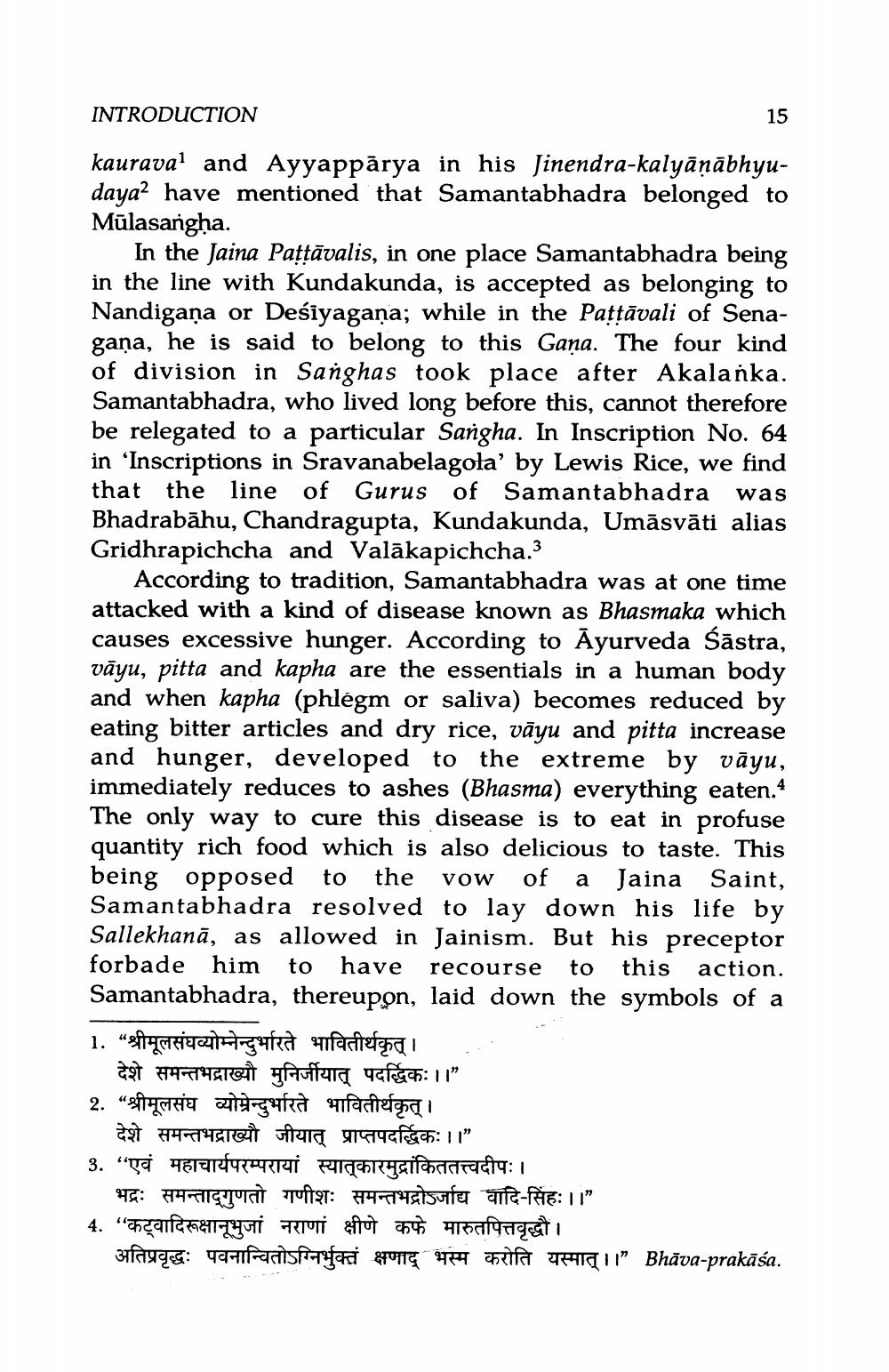________________
INTRODUCTION
15
kaurava1 and Ayyappārya in his Jinendra-kalyāṇābhyudaya2 have mentioned that Samantabhadra belonged to Mūlasangha.
In the Jaina Paṭṭāvalis, in one place Samantabhadra being in the line with Kundakunda, is accepted as belonging to Nandigaṇa or Deśiyagana; while in the Paṭṭāvali of Senagana, he is said to belong to this Gana. The four kind of division in Sanghas took place after Akalanka. Samantabhadra, who lived long before this, cannot therefore be relegated to a particular Sangha. In Inscription No. 64 in 'Inscriptions in Sravanabelagola' by Lewis Rice, we find that the line of Gurus of Samantabhadra was Bhadrabahu, Chandragupta, Kundakunda, Umāsvāti alias Gridhrapichcha and Valākapichcha.3
According to tradition, Samantabhadra was at one time attacked with a kind of disease known as Bhasmaka which causes excessive hunger. According to Ayurveda Śāstra, vayu, pitta and kapha are the essentials in a human body and when kapha (phlegm or saliva) becomes reduced by eating bitter articles and dry rice, vayu and pitta increase and hunger, developed to the extreme by vayu, immediately reduces to ashes (Bhasma) everything eaten.* The only way to cure this disease is to eat in profuse quantity rich food which is also delicious to taste. This being opposed to the VOW of a Jaina Saint, Samantabhadra resolved to lay down his life by Sallekhanā, as allowed in Jainism. But his preceptor forbade him to have recourse to this action. Samantabhadra, thereupon, laid down the symbols of a 1. “श्रीमूलसंघव्योम्नेन्दुर्भारते भावितीर्थकृत् । देशे समन्तभद्राख्यौ मुनिर्जीयात् पदर्द्धिकः । । ”
2. “ श्रीमूलसंघ व्योम्रेन्दुर्भारते भावितीर्थकृत् । देशे समन्तभद्राख्यौ जीयात् प्राप्तपदर्द्धिकः । ।”
3. “एवं महाचार्यपरम्परायां स्यात्कारमुद्रांकिततत्त्वदीपः ।
भद्रः समन्ताद्गुणतो गणीशः समन्तभद्रोऽर्जाद्य वादि - सिंहः । । "
4. "कट्वादिरूक्षानूभुजां नराणां क्षीणे कफे मारुतपित्तवृद्धौ ।
अतिप्रवृद्धः पवनान्वितोऽग्निर्भुक्तं क्षणाद् भस्म करोति यस्मात् । ।” Bhāva-prakāśa.




